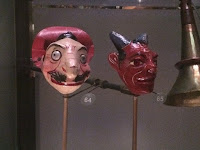Recent illustration of a Phrenology Head showing the different hand-drawn elements and the final piece rendered in Photoshop.
Franz Joseph Gall invented the word 'Cranioscopy', now known as 'Phrenology' to describe his technique of determining someone's intellect and personality from the shape of their skull. Although this theory has now been proved (relentlessly) to be utter nonsense, Gall provided the concept of localisation within the brain - a substrate for modern neuroscience.
Below: 1808 illustration of Franz Joseph Gall leading a discussion on Phrenology with colleagues. By T. Rowlandson
From: Wellcome Library, London















